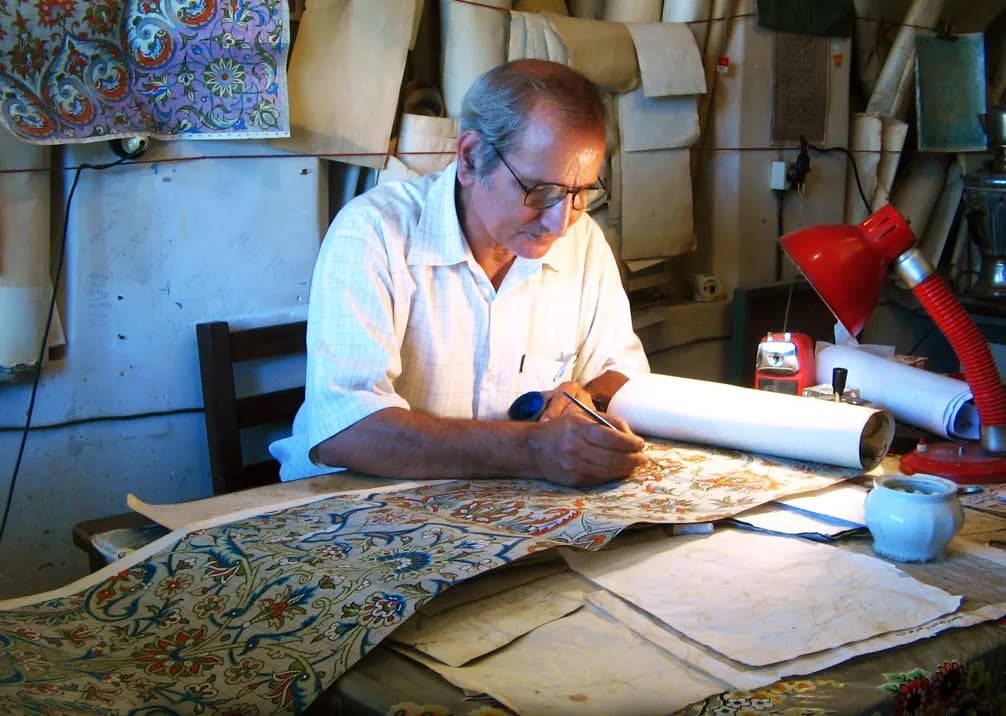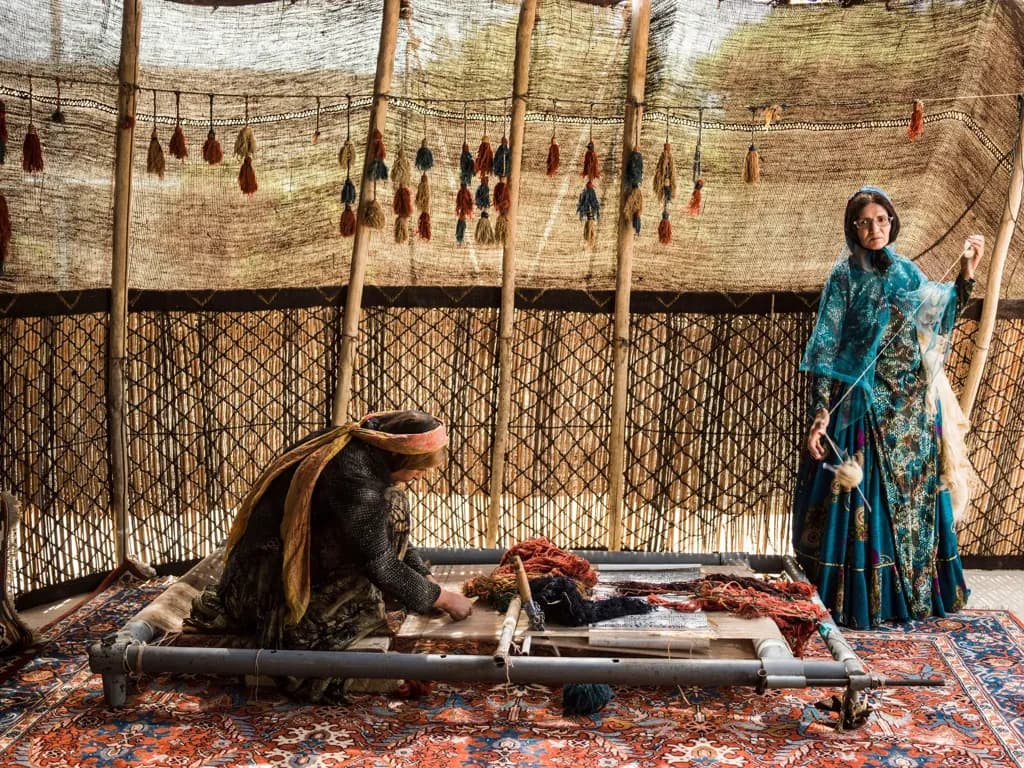Arak rugs, originating from the city of Arak (formerly Sultanabad) in central Iran, represent one of the most significant commercial carpet-weaving traditions in Persian culture. These carpets have historically been major players in the international market, particularly appreciated for their combination of durability and refined aesthetics.
The defining characteristic of Arak carpets lies in their distinctive interpretation of traditional Persian patterns, particularly the SaroukPrestigious Persian rugs from the Sarouk village in the Arak region of Iran, known for their durability, high-quality wool, and distinctive designs. Traditional Sarouks feature floral patterns with a central medallion on a rich red or blue field. American Sarouks, produced for the U.S. market in the early 20th century, were often re-dyed to achieve a preferred rose-red color. and Sultanabad styles. These rugs typically feature large-scale floral patterns and intricate all-over designs executed in a slightly more angular and bold manner than their urban counterparts.
The color palette of Arak rugs is particularly rich and sophisticated, featuring deep reds, navy blues, and warm browns as primary colors, often complemented by ivory backgrounds and subtle accents of green and gold. These colors are known for their exceptional aging characteristics, developing beautiful patinas over time.
The woolA natural fiber used in high-quality carpets, prized for its durability, resilience, natural stain resistance, and fire-retardant properties. used in Arak carpets is carefully selected for its durability and luster, often sourced from sheep raised in the surrounding mountainous regions. This high-quality woolA natural fiber used in high-quality carpets, prized for its durability, resilience, natural stain resistance, and fire-retardant properties., combined with expert weaving techniques, creates pieces with excellent durability and a distinctive feel underfoot.
Technically, these rugs feature moderate to high knot counts, typically ranging from 120-300 KPSIKnots Per Square Inch, a measure of quality in hand-knotted rugs. Higher knot counts generally indicate finer detail and higher quality. (knots per square inch). The foundation is usually cotton, providing excellent structural stability. This construction creates carpets that balance refinement with exceptional durability.
The sizing of Arak rugs tends toward larger formats, with particular emphasis on room-sized carpets that showcase their bold patterns to full effect. These proportions reflect both traditional preferences and international market demands.
Modern Arak production maintains its reputation for quality while adapting to contemporary tastes. These pieces often feature slightly simplified versions of classical patterns that work particularly well in modern interiors while preserving their essential character.
The investment value of Arak carpets has remained consistently strong, reflecting their position as one of the most commercially successful Persian rug styles. Each piece represents a significant investment in both artistic and practical terms.
These rugs are particularly valued for their versatility in both traditional and contemporary settings. Their bold patterns and rich colors provide sophisticated focal points that work especially well in larger spaces, where their scale and presence can be fully appreciated.
Each Arak rug represents a continuation of one of Persia's most important commercial weaving traditions, where sophisticated design and technical excellence combine to create pieces that serve both as functional art and as durable floor coverings.
The enduring popularity of Arak carpets in international markets speaks to their successful combination of aesthetic appeal, structural integrity, and practical durability, making them particularly suitable for both residential and commercial applications.



























